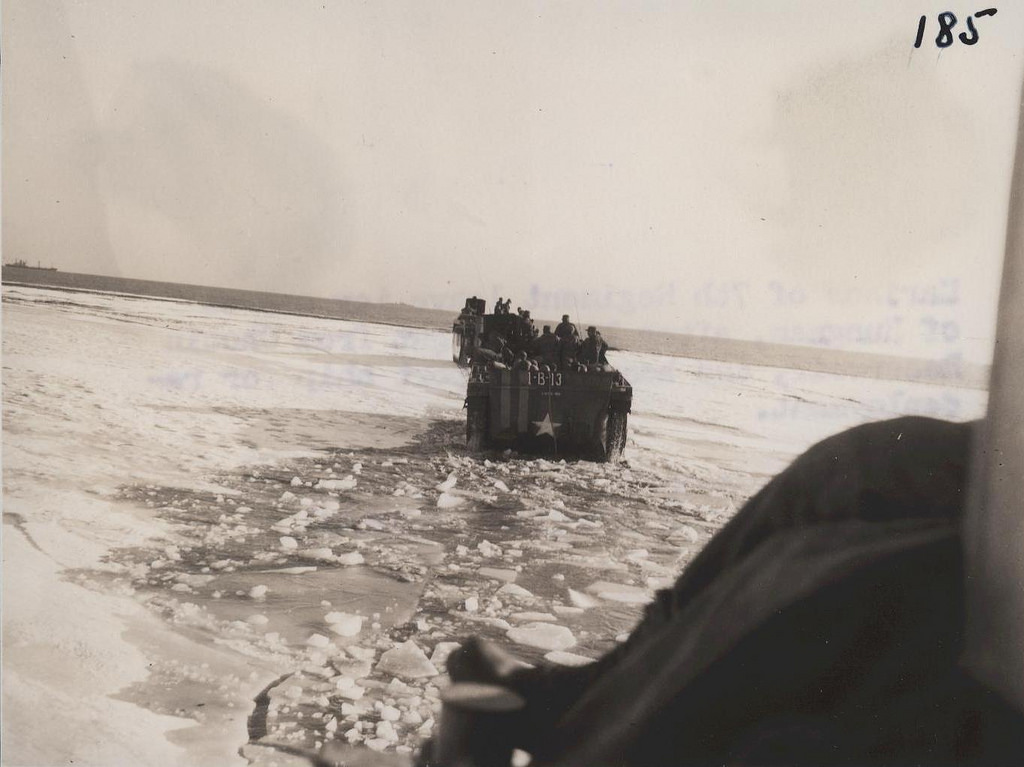The Peninsula
The Son of Refugees who Became President of the Republic of Korea Visits D.C.
Published June 29, 2017
Category: South Korea

By Seung Hwan Chung
On December 19 1950, the SS Meredith Victory, a 7,600-ton merchant marine vessel, was about to leave from the North Korean port city of Hungnam. Hundreds of thousands of refugees flocked to the pier at Hungnam as the bombing of the Chinese army came closer. Leonard Larue, a U.S. Navy captain, made the decision to abandon almost all of the arms and military supplies from the ship and took on 14,000 evacuees in an operation code-named “Christmas Cargo.”
The parents of Moon Jae-in and his older sister were among the 14,000 refugees who fled aboard the Meredith Victory, arriving on Geoje Island in Gyeongsang Province on Christmas Eve. Moon Jae-in was born two years later on Geoje Island in January 1953. Thus, the son of a refugee from Hungnam became the 19th President of the Republic of Korea thanks to this successful rescue operation called the Hungnam Evacuation, which is credited by the Guinness Book of World Records as the largest transportation of evacuees in history.
In the lead-up to the evacuation, the 3rd U.S. Division was advancing northward from Wonsan to assist UN and South Korean forces trapped near the Chosin Reservoir. After losing Wonsan, the 10th U.S. Army Corps and the 1st Korean Army Corps had to withdraw to the sea as their retreat path was blocked, leading them to the port city of Hungnam. The first unit that withdrew from Hungnam was the 3rd Korean Division, followed by the 1st U.S. Marine Division.
According to the Korean Ministry of Patriots & Veterans Affairs, the Battle of the Chosin Reservoir is recorded as among the most brutal battles in the history of the U.S. Marine Corps. During the Battle, 15,000 U.S. marines fought through 120,000 Chinese soldiers in the extreme winter cold of -22 to -40 degrees Fahrenheit. As a result, 4,500 U.S. marines died and 7,500 were wounded.
President Moon Jae-in remarked on his family’s story at a reception for Korean War Veterans on June 23, 2017, saying, “Today we are joined by the heroes of the Battle of Chosin Reservoir and the Hungnam Evacuation from North Korea. These two historic occasions became well known even to postwar generations in Korea who did not experience the war. The son of a refugee from Hungnam could become the President of the Republic of Korea and join you all today. I hope this fact helps make the Korean War veterans of the U.N. Forces feel a sense of delight and reward.”
President Moon Jae-in is scheduled to make a visit to Washington D.C. from June 28 to July 1 for his first summit meeting with U.S. President Donald Trump. As his first stop in the United States, he visited the new memorial for the Battle of the Chosin Reservoir at the National Museum of the Marine Corps in Quantico, Virginia on June 28. There, Mr. Moon laid a wreath before the memorial that commemorates the Korean War battle which enabled the evacuation of civilians.
The “Star of Koto-ri,” a symbol of the battle, is on the top of the monument. U.S. Marines started to wear the star to commemorate the bright stars they saw after a snowstorm before succeeding in the evacuation.
President Moon will also visit the Korean War Veterans Memorial in Washington D.C. along with Vice President Mike Pence, whose father was a Korean War veteran who was awarded a Bronze Star Medal for his service.
Additionally, Foreign Minister Kang Kyung-wha remarked on the Hungnam Evacuation during her visit to the U.S. 2nd infantry division base in Gyeonggi Province, stating “President Moon will invite Korean War veterans who participated in the Hungnam Evacuation” to the White House during the summit.
President Moon’s visit to the United States will lay the foundation for further upgrading South Korea-U.S. relations. The fact that the new Korean president is highlighting his family history and making a point to thank Korean War veterans throughout the trip can make the summit even more meaningful. Through the visit, the two heads of state can share a vision for further developing the Korea-U.S. alliance into an even greater one.
Seung Hwan Chung is a reporter with the Maeil Business Newspaper and a visiting fellow with the Korea Economic Institute of America. The views expressed here are the author’s alone.
Image from USMC Archives’ photostream on flickr Creative Commons.
